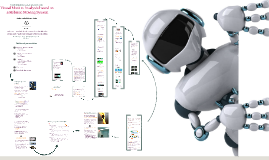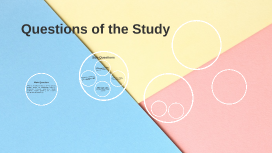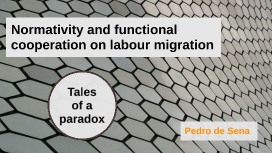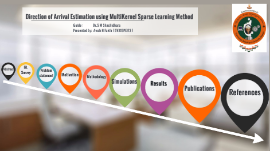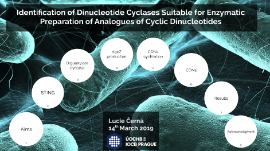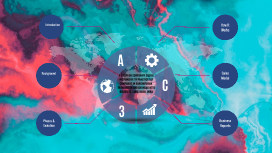phd presentation
Transcript: Direction of Arrival Estimation using MultiKernel Sparse Learning Method Guide : Dr.S M Shashidhara Presented by: Awab H Fakih ( 5VX15PEJ73 ) Abstract To develop the Multi kernel Sparse learning (MKSL) algorithm for Direction of Arrival estimation(DOAE) in antenna arrays. DOAE is carried out using multiple sparse learning techniques. Matlab based implementation is carried out and the outcome are compared with the previous literatures and the outcome are pronouncing better performance in the proposed work. Abstract The necessity of Direction Of Arrival (DOA) is important in many applications like the radar systems, wireless communication, radio astronomy, tracking moving objects, sonar etc[1]. The increasing over usage of the low end of the spectrum has lead the people to start discover the higher frequency band for these applications, where larger spectrums is available [1-3]. 5G communication which works with higher frequencies, higher data rate and higher user density, multipath fading and cross- interference become more serious issues, resulting in the degradation of bit error rate (BER). Signal processing aspects of smart antenna systems has lead to development of effective algorithms for Direction-of-Arrival (DOA) estimation and adaptive beam forming. Introduction The DOA estimation methods have reached newer heights by having different fast estimation methods and low energy consumption based methods introduced recently. Dynamic dictionary based methods for signal and image processing are popping up with the idea of early detection process which increases the speed of estimation and reduces the memory and processing time. The traditional DOA estimation is mainly divided into two classes. One is non-parameterized method including beam forming, Capon spatial spectrum estimation and subspace methods such as MUSIC and ESPRIT. These methods have some constrains in noise power and correlation between signal sources to achieve high precision. The other is parametric methods mainly including deterministic maximum likelihood estimation method and stochastic maximum likelihood estimation method. But they have some limitation on the initial value and convergence. Lit. Survey As a solution to the off-grid effect. The statistic information of covariance matrix under the uncorrelated sources condition is utilized and a simple sparse representation model is given. Then the cross iteration and series expansion approximation are introduced to update the dynamic dictionary. Compared with the conventional sparse representation method, it has better performance and lower computation complexity. Fast covariance matrix sparse representation for DOA estimation based on dynamic dictionary Tong Qian, Jin Zhi Xiang & Wei Cui 2016 IEEE 13th International Conference on Signal Processing (ICSP). This paper proposes a novel sparse representation method for direction of arrival estimation based on dynamic dictionary and negative exponent penalty. The dynamic dictionary can eliminate the off-grid effect and the negative exponent penalty is capable of strengthening the sparse constraint to improve the performance. The basis is regarded as a part of the optimal target and the cross iteration is utilized to jointly update the dictionary and sparse support in this method. Based on the propositions of the penalty function, the penalty function is designed to replace of ℓ1 norm because of its unbiasedness and stronger sparse constraint. The regularization parameter is simplified as a constant due to pre-white process, which greatly extends the application range of the proposed method. Sparse Reconstruction Method for DOA Estimation Based on Dynamic Dictionary and Negative Exponent Penalty Tong Qian, Wei Cui and Qing Shen Chinese Journal of Electronics ( Volume: 27, Issue: 2, 3 2018 ), 386 – 392. Vector-valued dictionary elements are formed for specific parameter values. A linear combination of a subset of dictionary elements is used to represent the model The dictionary elements are dynamically adjusted to improve parameter estimation performance. We examine the performance of both static and dynamic algorithms in terms of probability of correct model order selection and the root mean-squared error of parameter estimates. Dynamic Dictionary Algorithms for Model Order and Parameter Estimation C. D. Austin, J. N. Ash & R. L. Moses, IEEE Trans. Signal Process., vol. 61, no. 20, pp. 5117-5130, Oct 2013. Sparse signal priors help in a variety of modern signal processing tasks. For instance, sparse approximation of a signal with an overcomplete dictionary or reconstruction of a sparse signal from a small number of linear measurements. The reconstruction problem typically requires solving an ℓ1 norm minimization problem. We also discuss a case where these ideas can be extended to accommodate for more general changes in the system matrix. Sparse signal recovery and dynamic update of the underdetermined system M. Asif and J. Romberg, in Signals, The






